Why Monsoon in Nepal?
Traveling to Nepal during the monsoon season, which typically spans from June to August, offers a unique set of experiences that are distinct from other times of the year. Here are several compelling reasons why visiting Nepal during the monsoon can be a particularly rewarding choice:
-
Lush Landscapes: Monsoon rains transform Nepal’s landscapes into vibrant and lush panoramas. The valleys turn a vibrant green, and the air is clean and fresh after the dust of the pre-monsoon months is washed away. This makes for stunning photography opportunities with dramatic cloud formations and verdant scenery.
-
Fewer Tourists: The monsoon season sees fewer visitors, which means popular tourist spots are less crowded. This allows for a more relaxed exploration of cultural and historical sites, and you often get better deals on accommodation and travel services due to lower demand.
-
Vibrant Local Life: The monsoon is a significant time for agriculture in Nepal, and it is a period of growth and renewal. This is a fantastic time to observe and engage with local life, as communities are active in planting and other agricultural activities. The lively local markets brimming with fresh produce and the active participation in cultural and religious festivities provide deep insight into Nepalese culture.
-
Unique Cultural Festivals: Monsoon coincides with some important festivals in Nepal, such as Janai Purnima and Gai Jatra. These festivals are celebrated with great enthusiasm, featuring rituals, processions, and a variety of cultural performances that are not witnessed at other times of the year.
-
Ideal for Ayurveda Treatments: According to Ayurveda, the monsoon season is the best time for rejuvenation treatments. The cool and damp climate helps the body’s pores to open up and makes it more receptive to herbal oils and therapies, enhancing the effectiveness of treatments.
-
Adventure Sports: For adventure enthusiasts, the monsoon brings exciting conditions for white water rafting. Rivers are at their fullest, providing thrilling rapids and an excellent rafting experience. Additionally, the rain-shadow regions like Mustang and Dolpo offer great trekking opportunities even during the monsoon.
-
Rich Wildlife Experiences: The national parks, although more challenging to navigate, are teeming with life during the monsoon. The lush vegetation offers a great environment for wildlife and bird watching. In particular, the elephant grass in regions like Chitwan grows tall, and animals are more active, making it a fruitful time for wildlife enthusiasts.
-
Travel Costs: Travel and accommodation costs are generally lower during the monsoon, making it a cost-effective time for budget travelers to explore Nepal. You can often negotiate more favorable rates for tours and stays.
The monsoon in Nepal brings challenges, such as occasional transportation delays and the need for proper gear, but with the right preparation, it can offer an array of unique and enriching experiences that showcase the country’s natural beauty and cultural richness in full bloom.
Cultural Exploration in Kathmandu
Exploring the rich cultural heritage of Kathmandu during the monsoon offers a unique and immersive experience, distinct from any other time of the year. The rains bring a refreshing and mystical ambiance to the city's ancient temples, palaces, and streets, making it an ideal time for those interested in delving deep into the history and spirituality of Nepal. Here are some key aspects of cultural exploration in Kathmandu during the monsoon:
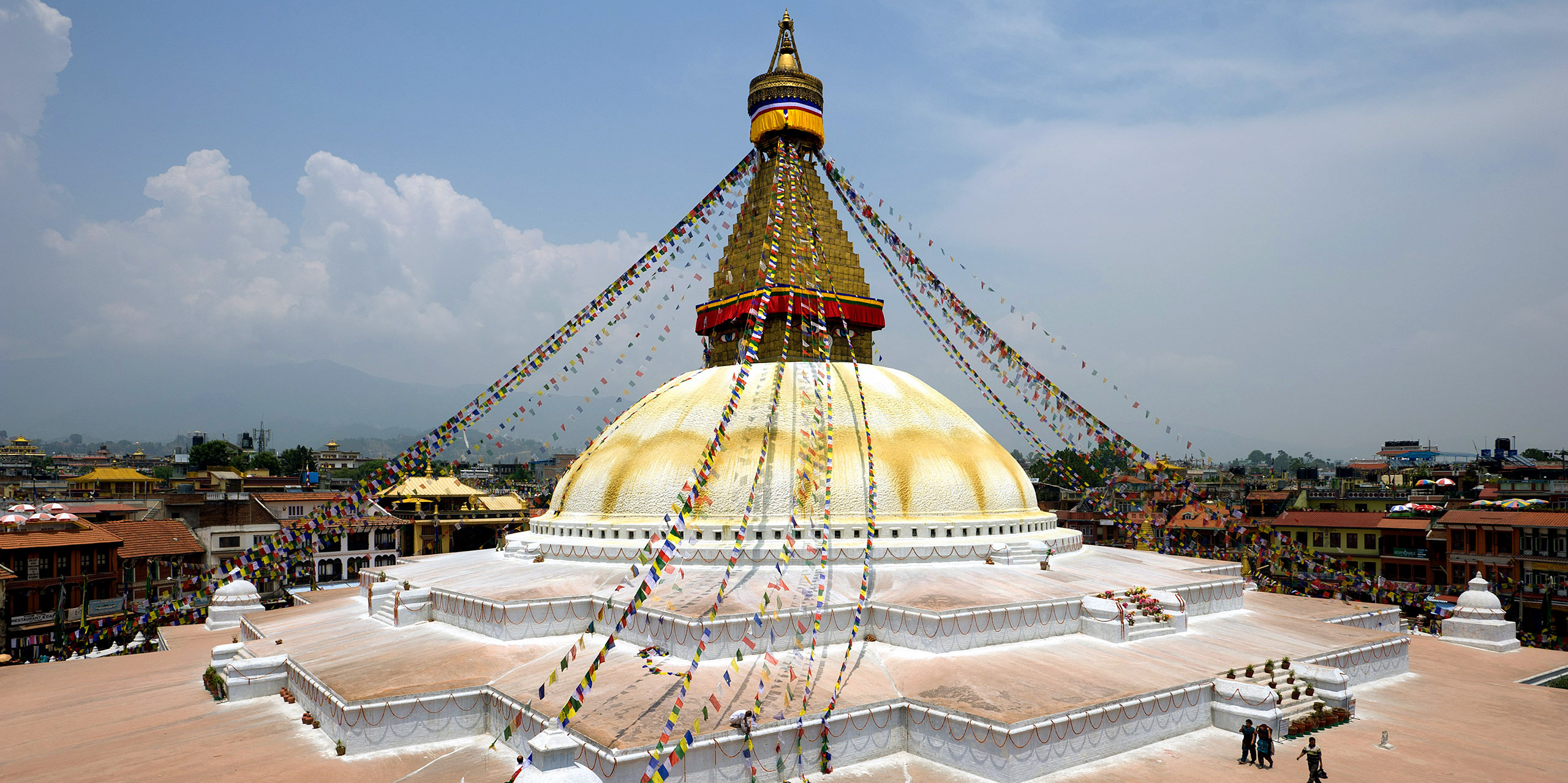
-
Swayambhunath Stupa (Monkey Temple): Perched on a hill overlooking Kathmandu, Swayambhunath is one of the most ancient and revered holy shrines in Nepal. The monsoon mists that often envelop the hill add a mystical quality to the site. The stupa is a great spot for meditation, peaceful walks, and panoramic views of the city, shrouded in lush greenery from the rains.
-
Kathmandu Durbar Square: A UNESCO World Heritage site, Kathmandu Durbar Square is the historic heart of the city, featuring a royal palace and numerous temples dedicated to Hindu gods and goddesses. Exploring this square during the monsoon allows for a more relaxed visit, with fewer tourists and a vibrant local life that can be observed in more authentic hues.
-
Pashupatinath Temple: This sacred Hindu temple on the banks of the Bagmati River is a significant destination for pilgrims. During the monsoon, the increased flow of the river adds a powerful and spiritual energy to the temple surroundings. Visitors can witness religious ceremonies and the daily rituals performed by the Sadhus (holy men).
-
Patan Durbar Square: Located in Lalitpur, near Kathmandu, Patan Durbar Square is known for its artisan community and exquisite craftsmanship in metal and stone. Monsoon rains highlight the architectural beauty and intricate carvings of the temples and palaces here. The Museum in the square is also a must-visit for those interested in learning about the rich cultural history of the Kathmandu Valley.
-
Thamel and Asan Market: For a more local cultural experience, wander through the bustling streets of Thamel and Asan. These areas are famous for their vibrant markets and narrow alleys, lined with shops selling everything from local handicrafts to traditional Nepalese attire. The monsoon season adds a lively atmosphere to these markets, as locals hustle about their daily lives.
-
Art and Gallery Tours: Kathmandu is home to numerous art galleries that showcase classical and contemporary Nepalese art. Galleries like the Siddhartha Art Gallery and the Nepal Art Council Gallery host exhibitions that feature works by local artists, which reflect the culture and traditions of Nepal.
-
Cultural Shows and Cuisine: Experience cultural shows that feature traditional Nepalese music and dance. Many restaurants and hotels in Kathmandu offer dinner shows where you can enjoy authentic Nepalese cuisine while watching performances that depict the folklore and myths of Nepal.
-
Engage with Local Communities: Participating in community activities or visiting local homes can provide deeper insights into the daily lives and traditions of the Nepali people. Many community centers and NGOs organize events and workshops that visitors can attend to learn more about local crafts, cuisine, and customs.
Cultural exploration in Kathmandu during the monsoon is not just about visiting sites; it's about experiencing the pulse of the city as it navigates the rainy season, revealing practices and scenes that are deeply rooted in the Nepali way of life. This time of year offers a quieter, yet profoundly rich tapestry of cultural interactions, ideal for those looking to understand and appreciate the essence of Kathmandu.
Attend Vibrant Festivals
Attending the vibrant festivals in Nepal during the monsoon season offers a spectacular insight into the country's rich cultural tapestry. These festivals, celebrated with great fervor and community participation, provide a unique opportunity to experience local traditions, religious practices, and the joyous spirit of the Nepali people. Here are some of the key festivals that take place during the monsoon and are a must-experience for visitors:
.jpg)
-
Janai Purnima: Janai Purnima, or the Sacred Thread Festival, typically occurs in August. On this day, Hindu men renew their Janai, a sacred thread worn across the chest, after taking a holy bath in rivers or ponds. This festival is also significant for the Newar community in the Kathmandu Valley, who celebrate it as Kwati Purnima, where they consume Kwati, a soup made from sprouted beans, believed to be healthful for the monsoon season. It's a wonderful occasion to witness religious rites and enjoy the local culinary delicacies that accompany the celebrations.
-
Gai Jatra (Festival of Cows): Gai Jatra is one of the most colorful and humorous festivals celebrated in the Kathmandu Valley, particularly in Kathmandu, Patan, and Bhaktapur. Held in August, the festival commemorates the lives of those who passed away within the last year. Families of the deceased parade through the streets with cows or young boys dressed as cows, believed to help guide the departed souls to heaven. The festival also includes satires, jokes, and comedic performances, making it a lively event that blends solemnity with celebration.
-
Indra Jatra: Celebrated in September, Indra Jatra marks the end of the monsoon season and is one of Kathmandu’s most exciting and revered festivals. The festival honors Indra, the god of rain, and features several days of processions, masked dances, and religious ceremonies. The Kumari, the living goddess, is paraded through the streets in her chariot, a major highlight for many visitors. The spectacle of lights, colors, and the traditional Lakhey dance make it a culturally enriching experience.
-
Teej: Teej is a significant Hindu festival primarily celebrated by women. During this festival, women fast and pray for the marital bliss and health of their husbands or for a good husband if they are unmarried. The celebrations include singing, dancing, and donning beautiful red sarees. Although Teej is celebrated across the country, the festivities in the Kathmandu Valley are particularly vibrant, offering a deep dive into the role of women in Hindu religious traditions.
-
Bhoto Jatra: Part of the larger Rato Machhindranath Festival, Bhoto Jatra occurs at the end of the monsoon season. It involves displaying a sacred vest to the public, which is believed to bring good luck. The festival is celebrated with much fanfare in Patan, featuring a chariot procession similar to that during Indra Jatra.
Each of these festivals offers a unique perspective on Nepalese culture, tradition, and community life. They allow visitors to witness the deep-rooted faith and vibrant customs that are a fundamental part of Nepal's social and religious framework. For anyone looking to experience the authentic spirit and communal harmony of Nepal, attending these monsoon festivals is an unparalleled experience.
Adventure in White Water Rafting
White water rafting in Nepal during the monsoon season offers an exhilarating adventure, with the rivers swollen from the rains, providing thrilling rapids and a unique challenge for rafting enthusiasts. The monsoon, which typically runs from June to August, breathes new life into Nepal's rivers, making this a prime time for those seeking high-adrenaline river activities. Here are the key aspects of experiencing white water rafting during Nepal's monsoon:
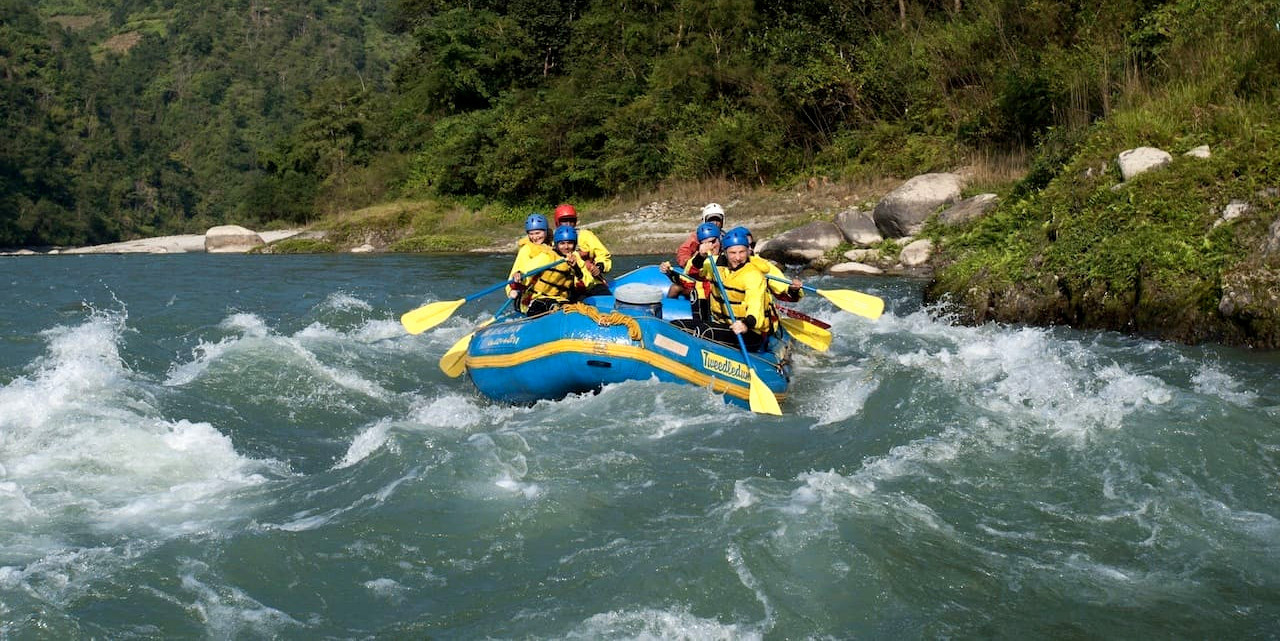
-
Trishuli River One of the most popular rafting destinations, the Trishuli River, is easily accessible from Kathmandu, Pokhara, and Chitwan. During the monsoon, the river's rapids, which range from Class III to IV, become more vigorous and challenging, providing an ideal setup for both beginners and experienced rafters looking for excitement close to the major cities.
-
Bhote Koshi River For those seeking a more intense experience, the Bhote Koshi River offers some of the steepest rafting in Nepal. Located near the border with Tibet, this river features Class IV-V rapids during the monsoon, presenting a thrilling and technical challenge that attracts adventure seekers from around the world.
-
Marsyangdi River Known as the "raging river," the Marsyangdi offers spectacular views and non-stop action, suitable for experienced rafters. The river flows through remote regions, providing a unique way to experience the natural beauty and dramatic landscapes of Nepal while navigating its challenging rapids.
-
Safety and Preparation: Monsoon rafting demands extra precautions. Operators like Relax Getaways ensure the highest safety standards, providing experienced guides who are well-versed in monsoon rafting conditions. Participants are equipped with all necessary safety gear, including helmets, life jackets, and appropriate wet suits. It is also essential to listen carefully to your guides and follow their instructions to ensure a safe and enjoyable experience.
-
What to Expect: Rafting during the monsoon is not just about tackling high rapids; it’s also an immersive experience in the vibrant and dynamic environment of Nepal’s rainy season. The rivers are surrounded by lush landscapes, with local flora and fauna in full bloom. Rafting trips can also be combined with camping along the riverbanks, offering a peaceful retreat after the day’s adventures.
-
Environmental and Cultural Insights: Participating in rafting expeditions during the monsoon also offers an opportunity to learn about the river ecosystems and the local communities living along the riverbanks. Many rafting companies contribute to conservation efforts and engage with local cultures, providing a deeper understanding of the environmental and social aspects of the regions visited.
White water rafting in Nepal during the monsoon is a thrilling adventure that combines physical challenges with the beauty of Nepal’s natural landscapes. It's an opportunity to experience the raw power of nature and the exhilaration of navigating through it. Whether you’re a seasoned rafter or a curious newbie, the monsoon season presents an exceptional time to dive into this vibrant water sport.
Wildlife Watching
Wildlife watching during the monsoon season in Nepal offers a unique and lush perspective on the country’s abundant natural habitats. The rains bring life to the forests and grasslands, making them teem with biodiversity. This is an excellent time for wildlife enthusiasts to observe a wide range of animals in their most active state. Here’s what makes wildlife watching during the monsoon season a must-do activity:
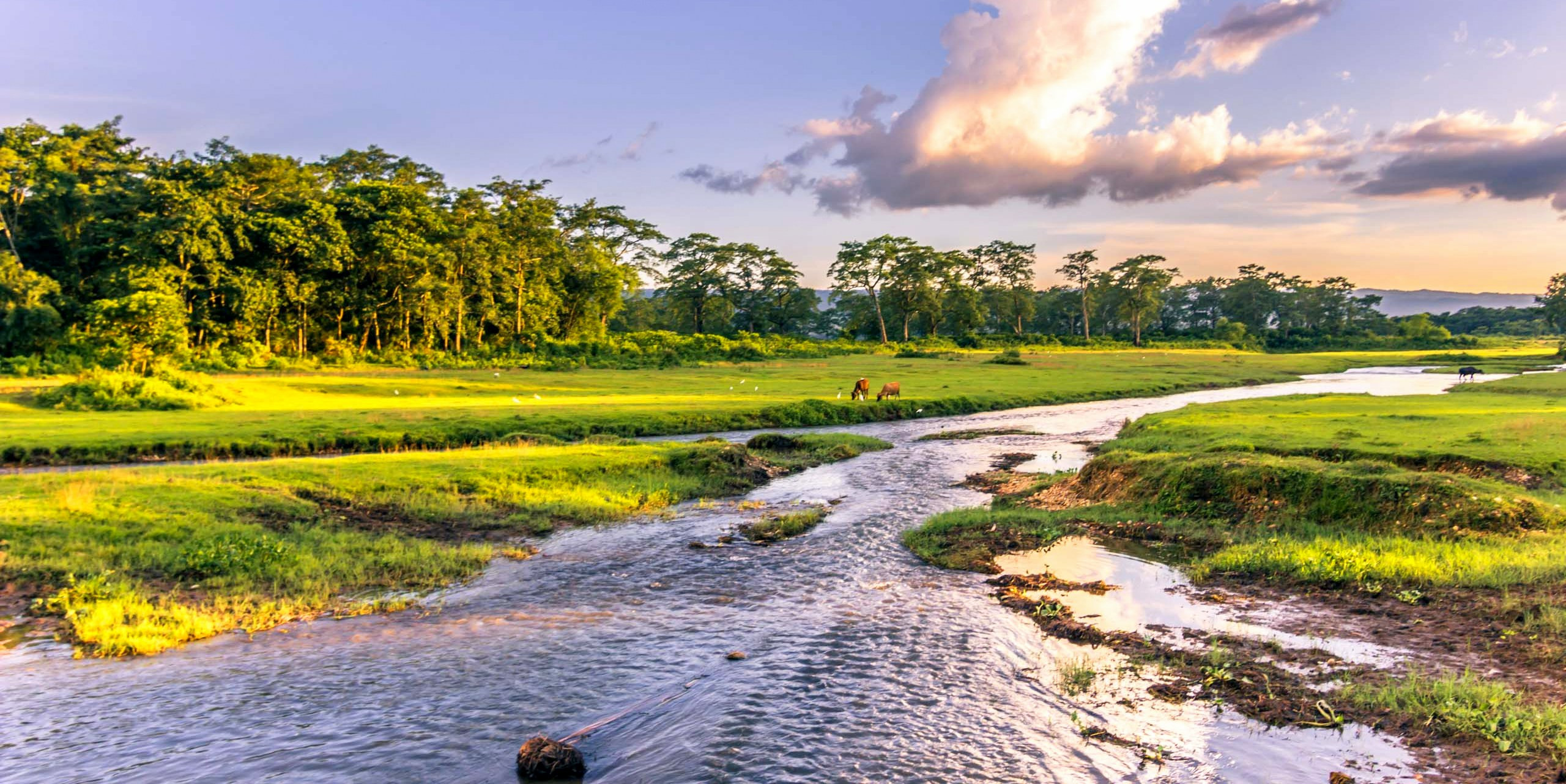
Prime Wildlife Destinations
-
Chitwan National Park: Located in the Terai region, Chitwan National Park is one of the best wildlife-viewing destinations in Asia. Despite the monsoon rains, the park remains accessible and offers a lush landscape that enhances the wildlife viewing experience. The park is home to the Bengal tiger, one-horned rhinoceros, and a variety of deer species. The dense foliage and increased water sources during the monsoon attract these animals to more accessible viewing spots.
-
Bardia National Park: Further west than Chitwan, Bardia National Park offers a more remote and undisturbed environment, which is ideal for those looking to escape the more touristic paths. The park is renowned for its elephant sightings, and the increased vegetation during the monsoon provides ample opportunities to see these majestic creatures, as well as the elusive Bengal tiger.
-
Koshi Tappu Wildlife Reserve: Though primarily famous for bird watching, Koshi Tappu Wildlife Reserve in the eastern Terai comes alive during the monsoon with migratory and resident birds. This season is particularly favorable for observing waterfowl, waders, and other bird species that thrive in the wet conditions.
Preparing for Monsoon Wildlife Safaris
-
Waterproof Gear: Ensure you have waterproof clothing and protection for your camera and binoculars.
-
Flexible Itinerary: Be prepared for sudden downpours, which might cause temporary disruptions to your plans.
-
Insect Protection: The monsoon brings out mosquitoes and other insects, so insect repellent is a must.
-
Expert Guides: Always choose experienced guides who know the area well and can navigate the parks safely during the rain.
Wildlife watching during Nepal’s monsoon season offers a vibrant, dynamic, and richly rewarding experience. The lush landscapes not only provide spectacular backdrops but also enhance the chances of seeing wildlife in its natural setting. For those willing to embrace the monsoon’s unpredictability, the rewards include witnessing the thriving life of Nepal’s famed biodiversity.
Ayurvedic Wellness Retreats
Ayurvedic wellness retreats during the monsoon season in Nepal provide a unique opportunity to experience rejuvenation and healing in line with ancient practices. According to Ayurveda, the monsoon is the best time for detoxification as the cooler and moist environment helps to open the pores of the body, making therapeutic treatments more effective. Here’s an overview of what to expect from Ayurvedic wellness retreats in Nepal during the monsoon:

-
Optimal Time for Panchakarma: The monsoon season is considered ideal for Panchakarma, a comprehensive Ayurvedic treatment that detoxifies and restores the body’s optimal balance. Panchakarma treatments can include a series of massages, herbal baths, oil treatments, and nutritional modifications designed to cleanse the body of toxins. The naturally cool climate of the monsoon helps the body retain the oils used in many Ayurvedic treatments, enhancing their effectiveness and absorption.
-
Retreat Settings: Many Ayurvedic retreats in Nepal are set in tranquil locations that complement the healing process. These retreats often overlook lush landscapes, with views of verdant valleys, flowing rivers, or serene forests. The settings are not only beautiful but also promote a deep sense of peace and connection with nature, which is central to Ayurvedic healing principles.
-
Holistic Wellness Programs: Retreats typically offer a variety of programs tailored to individual health needs and goals. These programs can range from stress relief and weight management to more intensive detoxification and rejuvenation packages. Activities may include yoga, meditation, Ayurvedic cooking classes, and workshops on lifestyle changes to sustain health benefits beyond the retreat.
-
Experienced Practitioners: Ayurvedic retreats in Nepal are staffed by experienced practitioners who are well-versed in traditional Ayurvedic medicine. These experts not only administer treatments but also provide valuable insights into living a balanced and healthy lifestyle according to Ayurvedic principles. Their guidance is personalized, taking into account each individual's dosha (body type), medical history, and wellness goals.
-
Cultural Integration: Participating in an Ayurvedic retreat during the monsoon in Nepal also allows for a deeper cultural immersion. Guests can learn about the local herbs and ingredients used in treatments and meals, and how these are integrated into daily Nepalese life. This holistic approach not only treats the body but also enriches the mind and spirit through a better understanding of Nepalese traditions and natural medicine.
-
Health Benefits: The benefits of attending an Ayurvedic retreat during the monsoon are numerous. They include improved digestion, enhanced vitality, reduced stress, and a greater overall sense of well-being. The natural serenity of the monsoon season aids in this rejuvenation process, making it a perfect time for retreat.
Ayurvedic wellness retreats during the monsoon season offer a perfect escape into the world of traditional healing, surrounded by the natural beauty of Nepal. These retreats provide a sanctuary not only for physical restoration but also for mental and spiritual rejuvenation, aligned with the rhythms of nature and ancient wisdom. Whether seeking a comprehensive detox or simply a peaceful break from the hectic pace of life, Ayurvedic retreats in Nepal during the monsoon deliver an enriching and transformative experience.
Safe Monsoon Trekking
Trekking in Nepal during the monsoon season can be a rewarding experience if planned correctly. Despite the challenges posed by rain and mud, certain regions in Nepal offer ideal trekking conditions even during the monsoon due to their unique geographical features. These areas, known as rain-shadow areas, receive significantly less rainfall than the rest of the country, making them perfect for monsoon trekking. Here’s a guide to safe and enjoyable trekking in Nepal during the monsoon:
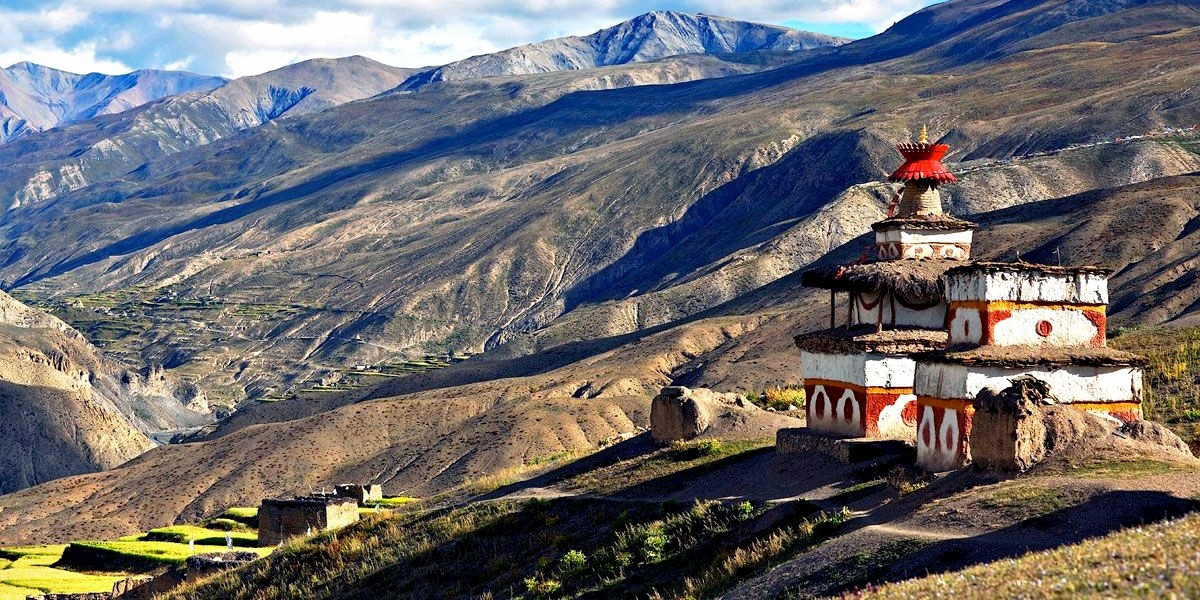
-
Upper Mustang: Upper Mustang, located in the rain-shadow of the Annapurna and Dhaulagiri ranges, is one of the best destinations for trekking during the monsoon. The landscape here is arid and starkly beautiful, featuring rock formations and medieval villages. This area experiences minimal rainfall, ensuring dry trails and clear views.
-
Dolpo Region: Another excellent rain-shadow area, Dolpo offers a glimpse into Tibetan culture and dramatic landscapes, including Shey Phoksundo Lake, one of Nepal’s most beautiful spots. The lower parts of Dolpo receive some rain, but the higher regions remain dry, providing safe hiking conditions.
-
Manang and Mustang (Annapurna Circuit): Certain sections of the Annapurna Circuit, particularly those around Manang and the northern parts near Mustang, also lie in a rain-shadow area. These parts offer safer trekking options with less disruption from the monsoon rains.
Safety Tips for Monsoon Trekking
-
Proper Gear: Essential items include waterproof jackets, trousers, and trekking boots. A good quality backpack cover and a waterproof cover for your sleeping bag are also crucial.
-
Experienced Guides: Hiring experienced local guides who know the terrain and can navigate safely during the monsoon is vital. They can also provide valuable insights into the local culture and environment.
-
Flexibility in Itinerary: Be prepared to adjust your trekking plans according to the weather conditions. Monsoon can occasionally bring unexpected showers even to rain-shadow areas.
-
Health Precautions: The monsoon season increases the risk of leeches and mosquitoes, so carrying insect repellent and salt (for leeches) is advisable. Ensure you have a first-aid kit equipped for minor injuries and common ailments.
-
Travel Insurance: Always travel with insurance that covers trekking activities, including emergency evacuation and medical services.
Advantages of Monsoon Trekking
-
Fewer Crowds: One of the significant advantages of trekking during the monsoon is the lack of crowds. Trails are less crowded, and teahouses have fewer guests, which can lead to a more authentic interaction with locals.
-
Lush Landscapes: Although some high-altitude areas remain arid, the approach trails can be lush and vibrant, offering beautiful green scenery and blooming flowers.
-
Cultural Experiences: The monsoon season is rich with local festivals and agricultural activities. Trekkers can observe and even participate in these cultural events, providing a deeper understanding of the local communities.
Monsoon trekking in Nepal requires careful planning and consideration, but with the right preparation and destinations, it can be an incredibly rewarding experience. Trekking in the rain-shadow regions not only ensures drier conditions but also exposes trekkers to unique landscapes and cultures not seen in more popular trekking seasons.
Photography Opportunities
Monsoon season in Nepal transforms the landscape into a dynamic and vivid canvas, offering exceptional opportunities for photography. The combination of lush greenery, dramatic skies, and vibrant daily life creates a unique setting for both amateur and professional photographers. Here are some key aspects to consider for photography during Nepal’s monsoon season:
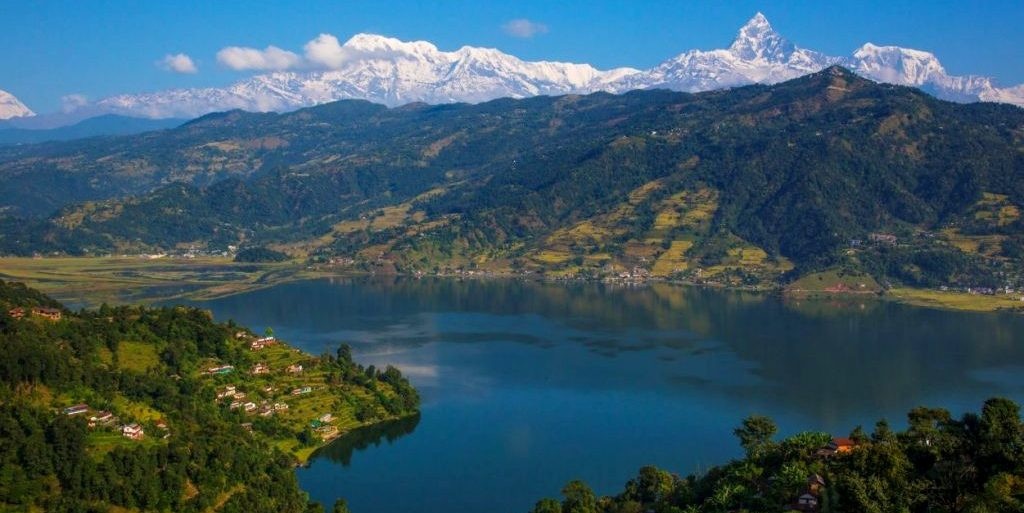
-
Dramatic Landscapes: The monsoon rains bring an explosion of greenery to Nepal's hills and valleys. This lushness contrasts beautifully with the rugged mountains, many of which may still be capped with snow in the higher altitudes. The play of light and shadow, along with the often-cloudy, moody skies, provides a dramatic backdrop for landscape photography. Capture the swirling mists and clouds as they envelop mountain peaks and forested hillsides.
-
Enhanced Colors: The monsoon season saturates colors, making them appear more vivid. The freshly washed streets of Kathmandu, the bright clothing of local people, and the rich greens of the rice paddies and forests can add a strong visual impact to your photographs. This is an excellent time for capturing the vibrancy of Nepal’s urban and rural settings.
-
Water Features: Waterfalls, rivers, and streams are at their fullest during the monsoon. The increased flow creates powerful images of cascading water and raging rivers. Places like the Poon Hill trek or the Annapurna region offer spectacular views of waterfalls and lush terrains that are particularly photogenic during this season.
-
Cultural Festivities: Monsoon coincides with several local festivals, including the vibrant Janai Purnima and the lively Gai Jatra. These festivals bring out elaborate processions, traditional attire, and a plethora of cultural activities that are a feast for the eyes and the camera. Capturing these events can provide a deep insight into the cultural richness of Nepal.
-
Daily Life and Local People: The monsoon season affects daily life in many ways, which can lead to compelling human interest stories. Photographing local people as they go about their daily routines—whether it’s children playing in the rain, vendors selling colorful umbrellas, or farmers working in the fields—can add a strong narrative element to your images.
-
Macro and Flora Photography: The wet environment of the monsoon is perfect for macro photography. The raindrops on plants, insects taking shelter, and the growth of new plants and flowers offer macro photography enthusiasts a chance to capture stunning close-up details of nature.
Tips for Monsoon Photography in Nepal
-
Protect Your Equipment: Ensure you have waterproof covers for your camera and lenses. Humidity and water can damage photography equipment.
-
Best Light: Overcast conditions can provide diffused light which is ideal for photography, reducing harsh shadows and bright highlights.
-
Be Prepared: Carry protective gear for yourself, like waterproof clothing and sturdy boots. Being comfortable allows you to focus on capturing great photos.
-
Patience and Flexibility: Weather can be unpredictable. Be ready to wait out rain showers and be flexible with your travel plans.
Monsoon in Nepal offers a unique opportunity to capture stunning photographs that showcase the natural beauty and cultural vibrancy of the country in a way that is not possible at other times of the year. With the right preparation and a keen eye, you can bring back images that truly reflect the spirit of Nepal during this lush season.
Indoor Activities
During Nepal's monsoon season, when the outdoor landscapes are drenched in rain, there are plenty of enriching indoor activities that can provide visitors with engaging experiences. Here are some notable indoor activities that you can enjoy, even when the weather outside is less than ideal:
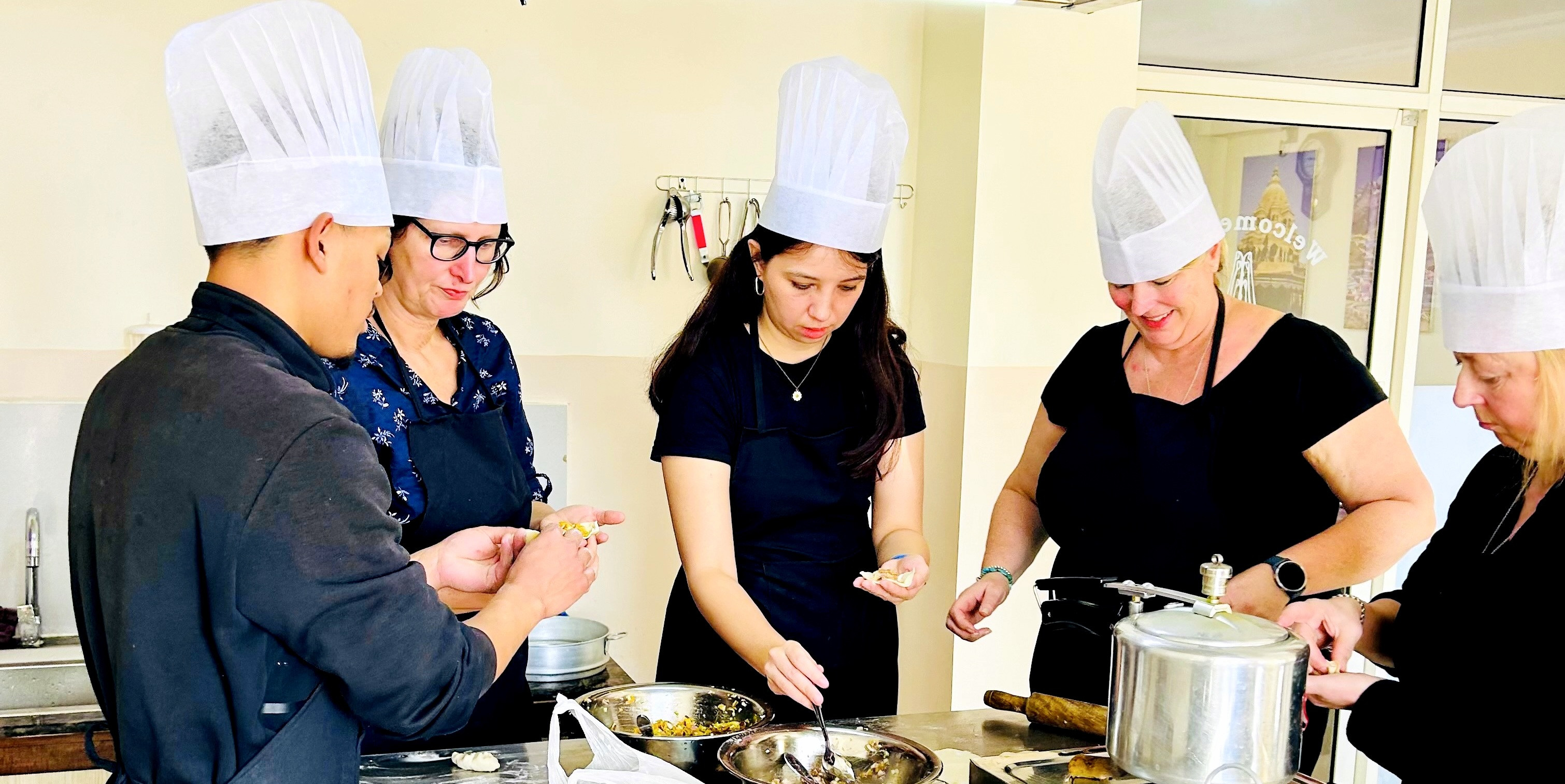
-
Museum Visits: Nepal boasts a variety of museums that offer insights into the nation's rich history, culture, and art. The National Museum of Nepal in Kathmandu, for example, displays artifacts from across the country that trace Nepal's historical and cultural evolution. The Patan Museum, located in Patan Durbar Square, is another excellent choice, focusing on traditional Nepalese art and architecture.
-
Art Galleries: Exploring Nepalese art can be a profound indoor activity. Kathmandu is home to numerous art galleries such as the Siddhartha Art Gallery and the Nepal Art Council Gallery, which feature contemporary and traditional art by Nepalese and international artists. These galleries often host new exhibitions, workshops, and artist talks that can provide deeper insights into the vibrant local art scene.
-
Cooking Classes: Participating in a Nepalese cooking class is a fun and interactive way to learn about the local cuisine and culture. Many classes include a market visit to buy fresh ingredients, followed by instruction on how to prepare traditional dishes such as momo (dumplings), dal bhat (lentils and rice), and various Nepalese curries.
-
Cultural Shows: Attend traditional Nepalese cultural shows which often include dance performances and live music. These shows are a great way to experience and appreciate the local culture and traditions from the comfort of an indoor venue. Places like the Nepal Cultural Center often host such events.
-
Spa and Wellness Centers: For those seeking relaxation, visiting a spa or wellness center can be the perfect monsoon activity. Many centers offer Ayurvedic treatments, massages, and wellness therapies that are especially beneficial during the cooler, damp monsoon months.
-
Yoga and Meditation Retreats: Joining a yoga or meditation session can be particularly refreshing during the monsoon. Many centers in Kathmandu and Pokhara offer indoor yoga and meditation classes that cater to all levels, providing a peaceful retreat from the monsoon rains.
-
Handicraft Workshops: Engage in a handicraft workshop where you can learn skills like pottery making, Thangka painting, or wood carving. These workshops not only offer a chance to learn a new craft but also support local artisans and provide an in-depth look at Nepalese artistic traditions.
-
Theater Performances: Check out local theater performances, which can range from traditional Nepalese street theater to modern plays. Theatres like Mandala Theatre in Kathmandu showcase a variety of local and international productions.
-
Literary Cafes: Visit one of Kathmandu’s literary cafes, where you can enjoy a good book, participate in book readings, or join lively discussions. These cafes often serve as cultural hubs, hosting events that include poetry readings and author meet-and-greets.
-
Shopping in Malls: For those who prefer a bit of retail therapy, visiting one of Kathmandu’s shopping malls like the Civil Mall or Labim Mall offers a way to shop for both local and international brands under one roof, away from the monsoon rains.
These indoor activities not only keep you dry during Nepal’s monsoon season but also provide valuable insights into the country's cultural and artistic heritage, making your visit enriching and memorable.
Travel Preparedness
Traveling during Nepal’s monsoon season, which typically spans from June to August, requires special preparations to ensure a safe and enjoyable experience. Here are some essential travel preparedness tips for navigating the monsoon in Nepal:
-
Pack Appropriate Clothing: The monsoon climate is characterized by heavy rain and humidity, but temperatures can still be warm. Pack lightweight, breathable clothing that dries quickly. Waterproof jackets, ponchos, and rain covers for your backpack are must-haves. It’s also wise to bring along a few warm layers since temperatures can drop, especially in the evenings or in higher altitudes.
-
Choose Suitable Footwear: Waterproof hiking boots are essential if you plan on trekking. For city travel, water-resistant shoes or sandals that can handle wet conditions are advisable. Always have a spare pair so you can rotate if one pair gets wet.
-
Protect Your Electronics and Important Documents: Waterproof bags or cases are crucial to protect your electronics such as cameras, smartphones, and laptops from rain. Similarly, keep your important documents, like your passport and travel insurance papers, in waterproof pouches.
-
Carry Insect Repellent and Basic First Aid: Monsoon increases the presence of mosquitoes and other insects, raising the risk of diseases like malaria and dengue fever in some areas. Carry a good insect repellent and consider packing a mosquito net if you're staying in rural areas. A basic first aid kit equipped with antiseptics, band-aids, anti-diarrhea medication, and any personal medication is also essential.
-
Be Flexible with Your Itinerary: The monsoon can lead to unexpected disruptions, such as transportation delays, road blockages, or even temporary closures of attractions. Keep your travel plans flexible and allow extra time for travel between destinations.
-
Stay Informed About the Weather: Regularly check local weather reports and be prepared for sudden changes. Apps and local news can provide timely updates about weather conditions in specific areas of Nepal.
-
Choose the Right Travel Insurance: Ensure that your travel insurance covers monsoon-related issues like trip cancellations or delays, and medical emergencies. Check that it includes coverage for activities you plan to engage in, such as trekking or rafting.
-
Travel with a Reputable Company: When booking tours and activities, choose reputable providers who have experience operating in monsoon conditions and are known for prioritizing safety. They will have the knowledge and resources to handle any challenges that arise due to the weather.
-
Use Waterproof Bags for Trekking: If you're trekking, use a waterproof trekking bag or a regular trekking bag with a high-quality rain cover. Pack your items in plastic bags inside your backpack for double protection.
-
Bring a Portable Umbrella and Quick-Dry Towel: A compact, sturdy umbrella can be invaluable during sudden downpours. Additionally, a quick-dry towel will be useful whether you’re trekking through the mountains or exploring the cities.
Traveling during the monsoon in Nepal can be a rich and rewarding experience, as the landscape is lush and the tourist crowds are thinner. With the right preparations, you can enjoy all that Nepal has to offer during this vibrant season safely and comfortably.
Health and Safety for Things to do in Nepal in Monsoon
Traveling in Nepal during the monsoon season presents unique health and safety challenges. The monsoon, typically from June to August, brings heavy rainfall, which can significantly impact travel plans and personal health. Here are essential health and safety tips to consider when engaging in activities in Nepal during the monsoon:
Health Precautions
-
Vaccinations and Health Checks: Before traveling, ensure you are up to date with vaccinations recommended for Nepal, including Hepatitis A and B, Typhoid, and Tetanus. Additionally, consider a consultation with a travel doctor who may recommend malaria prophylaxis if you plan to visit rural areas.
-
Avoid Waterborne and Foodborne Illnesses: The risk of waterborne diseases increases during the monsoon due to water contamination. Drink only bottled or purified water, avoid ice in drinks, and be cautious with raw fruits and vegetables that may not have been washed with purified water. Eating hot, cooked meals from reputable restaurants is advisable.
-
Manage Insect Bites: Mosquitoes are more prevalent during the monsoon, increasing the risk of dengue fever and other insect-borne diseases. Use insect repellent regularly, wear long-sleeved shirts and pants, and sleep under mosquito nets if necessary.
Safety Measures
-
Prepare for Trekking: If you plan to trek, be aware that trails may be slippery, leeches are more active, and visibility may be reduced. Use sturdy, waterproof trekking boots, carry trekking poles for stability, and always trek with a knowledgeable guide. Choose treks in the rain-shadow regions like Upper Mustang or Dolpo for safer conditions.
-
Be Cautious of Flooding and Landslides: Heavy rains can lead to sudden flooding and landslides, particularly in hilly and mountainous areas. Stay informed about the weather conditions and heed local advisories. Avoid river crossings during or immediately after heavy rains and be cautious on road journeys.
-
Road Travel Safety: Road conditions can deteriorate rapidly during the monsoon, with potholes, mudslides, and slippery surfaces. If you must travel by road, prefer daytime journeys and use experienced local drivers and well-maintained vehicles.
-
Urban Caution: In cities, be cautious of flooded streets and uncovered manholes. Fast-moving water can be dangerous, even in urban areas. Traffic may also be more chaotic during heavy rains, so extra caution is necessary when walking near roads.
Emergency Preparedness
-
Comprehensive Travel Insurance: Ensure your travel insurance covers medical treatment, emergency evacuation, and the potential costs associated with trip cancellations or delays due to monsoon-related issues.
-
Emergency Contacts: Keep a list of emergency contacts, including local emergency services, the nearest hospital, and your home country’s embassy or consulate. Also, have the contact information of your tour operator or local guides handy.
-
Stay Informed: Keep abreast of local news and weather forecasts. Mobile apps and travel alerts from reputable sources can provide critical information quickly.
By taking these health and safety measures, you can better manage the risks associated with monsoon travel in Nepal. Proper preparation and awareness can help ensure a safe, enjoyable, and healthy visit to this beautiful country during its lush monsoon season.
Tips for Things to do in Nepal in Monsoon
Traveling to Nepal during the monsoon season can be a fascinating experience, as the landscape bursts with lush greenery and the air is fresh and vibrant. To make the most of your trip during this rainy season, here are some practical tips tailored for engaging in activities and exploring Nepal between June and August:
-
Pack Smart: Include lightweight, quick-drying clothing in your luggage, as well as a sturdy raincoat, waterproof pants, and a good-quality umbrella. Waterproof covers for your backpack and shoes that can handle mud and wet conditions are also essential. Additionally, don’t forget to pack insect repellent and a basic first-aid kit.
-
Choose the Right Activities: Opt for activities that are less affected by the rain, such as cultural tours of temples and museums, cooking classes, or attending indoor cultural performances. For the more adventurous, rain-shadow areas like Upper Mustang and Dolpo offer excellent trekking opportunities even during the monsoon.
-
Embrace the Local Festivals: The monsoon season coincides with vibrant festivals like Janai Purnima and Gai Jatra. Participating in these festivals can provide a deep insight into the rich cultural fabric of Nepal and is a unique way to experience the country’s traditions and hospitality.
-
Stay Flexible: Monsoon weather can be unpredictable, with sudden showers and changes in weather conditions. Keep your plans flexible and allow for alterations based on the daily weather forecast. This flexibility can help you avoid disappointments and make the most of sunny or less rainy intervals.
-
Be Prepared for Trekking: If you decide to go trekking, ensure that you are well-prepared with appropriate gear, including waterproof bags and layers. Hiring a local guide is highly recommended, as they can provide valuable insights and updates on weather conditions and trail safety.
-
Capture the Scenery: The monsoon season offers unique photography opportunities with dramatic skies and vibrant landscapes. Protect your photography equipment with waterproof cases and bags. Early morning or late afternoon light, when the clouds might break, can provide spectacular lighting conditions for photography.
-
Enjoy the Cuisine: Monsoon is a great time to try local Nepalese cuisine, which often includes seasonal ingredients that are at their peak. Look for dishes that are warming and beneficial during cooler, damp weather, such as hot soups, stews, and tea.
-
Watch Out for Leeches: If you are hiking or walking in rural areas, be prepared to encounter leeches. Salt or tobacco water can be effective in removing them, and wearing leech socks can prevent them from attaching to your skin.
-
Check Road Conditions Regularly: If you are traveling by road, stay updated on the conditions as landslides and floods can cause road blockages. Always have an alternate route planned and consult with local drivers or guides.
-
Respect Local Sensitivities: Understanding and respecting local customs and sensitivities is important, especially when participating in festivals or visiting religious sites. Dress modestly and ask for permission before taking photographs of people or religious ceremonies.
By following these tips, you can enjoy a fulfilling and enjoyable trip to Nepal during the monsoon, experiencing the country’s beauty and cultural richness in a unique seasonal context.
Visiting Nepal during the monsoon season unveils a unique charm, with lush landscapes and vibrant cultural festivities. While the rains may pose challenges, they also enhance the natural and cultural beauty of the country, offering a serene and less crowded experience. Whether you're exploring rain-soaked temples, trekking in less-traveled regions, or participating in lively festivals, the monsoon season provides a unique opportunity to experience Nepal's richness. With careful planning and the right gear, a trip to Nepal during the monsoon can be a rewarding and unforgettable adventure.
FAQs for Things to do in Nepal in Monsoon
Q: Is it safe to travel to Nepal during the monsoon?
A: Yes, it is safe to travel to Nepal during the monsoon with the right preparations. Opt for safer regions like rain-shadow areas, and be flexible with your travel plans to manage potential landslides and flooding effectively.
Q: What are the best activities to do in Nepal during the monsoon?
A: Cultural tours, attending festivals like Janai Purnima and Gai Jatra, indoor activities such as museum visits, and trekking in rain-shadow regions like Upper Mustang or Dolpo are great options.
Q: What should I pack for a monsoon trip to Nepal?
A: Include lightweight, quick-drying clothes, a waterproof jacket, rain pants, durable water-resistant footwear, a waterproof backpack cover, insect repellent, and all essential documents in waterproof pouches.
Q: Are there any health concerns to be aware of during the monsoon?
A: The risk of waterborne and insect-borne diseases increases during the monsoon. Ensure you drink only bottled or purified water, avoid raw foods, use insect repellent, and stay current with recommended vaccinations.
Q: How does the monsoon affect trekking in Nepal?
A: Popular trekking routes may be wet, slippery, and have reduced visibility. However, trekking in rain-shadow areas such as Upper Mustang and Dolpo is more feasible as these areas receive significantly less rainfall.
Q: Can I participate in wildlife safaris during the monsoon?
A: Yes, wildlife safaris in Chitwan and Bardia National Parks can be lush and vibrant during the monsoon, with a higher chance of spotting wildlife due to abundant water and food sources.
Q: What are the advantages of visiting Nepal during the monsoon?
A: The monsoon season offers fewer tourists, less crowded attractions, lush landscapes, and excellent photography opportunities, allowing for a more immersive experience with local culture.
Q: How can I stay updated on weather conditions in Nepal during the monsoon?
A: Keep informed through local news, weather apps, and advisories from Nepal's Department of Meteorology. Always check the weather forecast before planning any day trips or treks.
Q: Are transportation services available during the monsoon?
A: Transportation services generally operate, but there may be occasional disruptions. Regularly check updates and maintain flexible travel plans.
Q: What should I do in case of a monsoon emergency?
A: Follow local advisories and directions from your tour operator or accommodation. Keep emergency contact numbers for local services, your embassy, and your travel insurance provider handy.
For the Nepal tour, please click here.
If you are looking for different kinds of Nepal Tours or Trekking Packages, feel free to contact us.
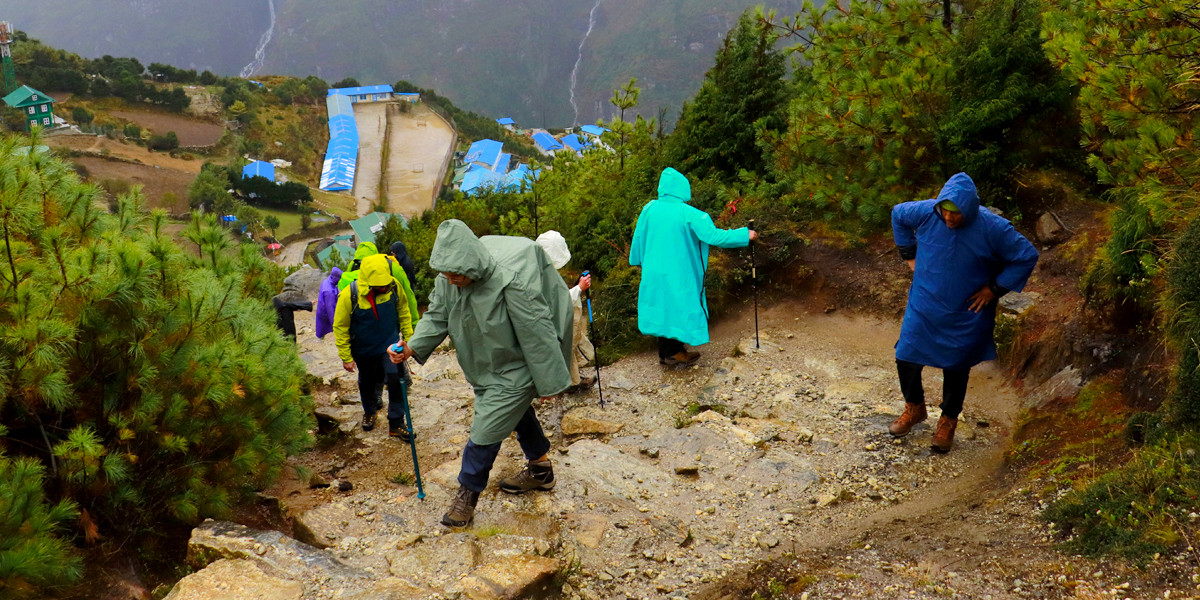


.jpg)






